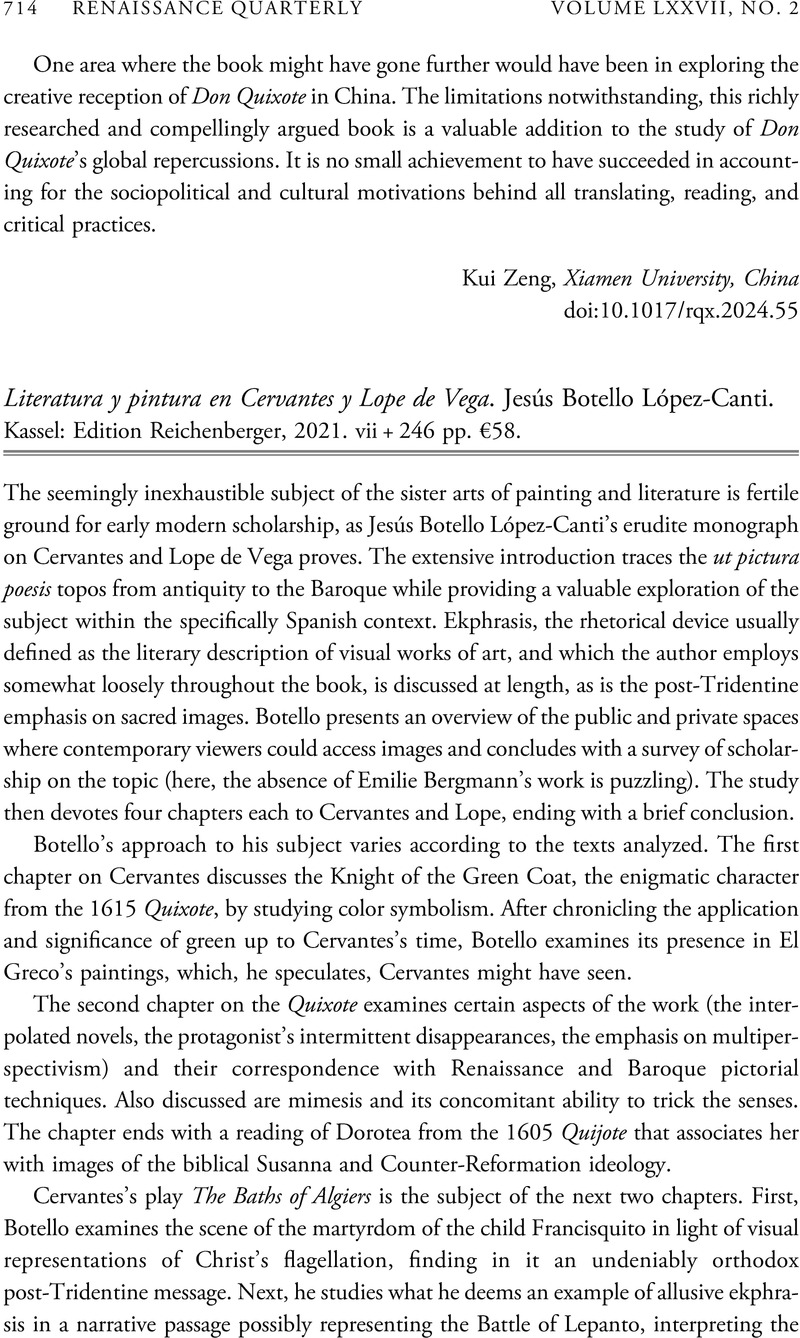No CrossRef data available.
Article contents
Literatura y pintura en Cervantes y Lope de Vega. Jesús Botello López-Canti. Kassel: Edition Reichenberger, 2021. vii + 246 pp. €58.
Review products
Literatura y pintura en Cervantes y Lope de Vega. Jesús Botello López-Canti. Kassel: Edition Reichenberger, 2021. vii + 246 pp. €58.
Published online by Cambridge University Press: 11 November 2024
Abstract
An abstract is not available for this content so a preview has been provided. Please use the Get access link above for information on how to access this content.

- Type
- Review
- Information
- Copyright
- Copyright © The Author(s), 2024. Published by Cambridge University Press on behalf of Renaissance Society of America



